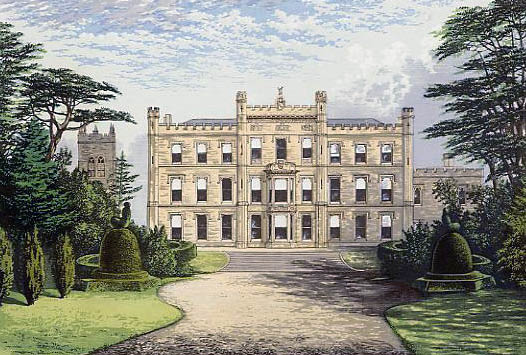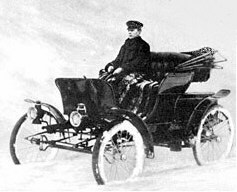|
Stanhope (carriage)
The stanhope was a gig, buggy, or light phaeton, typically having a high seat for one person and closed back. It was named after Captain Hon. Henry FitzRoy Stanhope (ca. 1754 - 1828, son of William Stanhope, 2nd Earl of Harrington), a well-known sportsman of his time, and built by the London firm of Tilbury, coachbuilders in Mount Street.At South Street, London in about 1820 according to Walrond, Sally: Looking at Carriages, p. 73 (see Tilbury (carriage) A tilbury is a light, open, two-wheeled carriage, with or without a top, developed in the early 19th century by the London firm of Tilbury, coachbuilders in Mount StreetAt South Street, London in about 1820 according to Walrond, Sally: Looking at ...) See also * Stanhope, an early auto body * Types of carriages References External linksD7849 Stanhope gig, wood, maker unknown, England, c 1862 - Powerhouse Museum Collection.Powerhouse Museum , Science + Design , Sydney Australia. Search "stanhope gig".Morven ParkMorven Par ... [...More Info...] [...Related Items...] OR: [Wikipedia] [Google] [Baidu] |
Stanhope Gig, C 1815-1830
Stanhope may refer to: In arts and entertainment * Stanhope essay prize, at Oxford University * Stanhope College, a fictional college attended by Supergirl People * Stanhope (name), a surname and given name * Earl Stanhope, a hereditary title held by seven people since 1718 * Spencer-Stanhope family, a family of British landed gentry * Earl of Harrington, a title in the Peerage of Great Britain Places Australia * Stanhope, Victoria, Australia * Stanhope Gardens, New South Wales, Australia Canada * Stanhope, Prince Edward Island, Canada * Stanhope, Quebec, Canada * Stanhope, Newfoundland and Labrador, Canada UK * Stanhope, County Durham, England * Stanhope, Kent, England * Stanhope, Peeblesshire, Scotland United States * Stanhope, Iowa * Stanhope, Kentucky * Stanhope, New Jersey * Stanhope, Ohio * Stanhope, a Mississippi landmark * Stanhope Hotel, in New York City In transportation * Stanhope (carriage), a horse-drawn gig, buggy or light phaeton * Stanhope (railways), thir ... [...More Info...] [...Related Items...] OR: [Wikipedia] [Google] [Baidu] |
Gig (carriage)
A gig, also called chair or chaise, is a light, two-wheeled sprung cart pulled by one horse. Description Gig carts are constructed with the driver's seat sitting higher than the level of the shafts. Traditionally, a gig is more formal than a village cart or a meadowbrook cart, and more comfortable, usually being sprung. A light gig can be used for carriage racing. ''OED'' gives the date of first known reference to a horse-drawn gig as 1791, and they were ubiquitous by the early 1800s. There are several types of gig, including: * ''calesín'': small, one-horse, hooded, a seat behind for the driver, used in the Philippines; diminutive of Spanish ''calesa'' * '' stanhope'': typically having a high seat and closed back; named after Fitzroy Stanhope, a British clergyman who died in 1864. * ''stick gig'': lightweight, two-wheeled, for one person * ''Tilbury (carriage)'', lightweight, two-wheeled, * ''whiskey'' or ''whisky'': small body that resembles a chair, suspended on leather brace ... [...More Info...] [...Related Items...] OR: [Wikipedia] [Google] [Baidu] |
Horse And Buggy
] A horse and buggy (in American English) or horse and carriage (in British English and American English) refers to a light, simple, two-person carriage of the late 18th, 19th and early 20th centuries, drawn usually by one or sometimes by two horses. Also called a roadster or a trap, it was made with two wheels in England and the United States (also made with four wheels). It had a folding or falling top. History A Concorde buggy, first made in Concord, New Hampshire, had a body with low sides and side-spring suspension. A buggy having two seats was called a double buggy. A buggy called a stanhope typically had a high seat and closed back. The bodies of buggies were sometimes suspended on a pair of longitudinal elastic wooden bars called ''sidebars''. A buggy whip had a small, usually tasseled tip called a ''snapper''. In countries such as the United States, the United Kingdom, and Canada, it was a primary mode of short-distance personal transportation, especially between 181 ... [...More Info...] [...Related Items...] OR: [Wikipedia] [Google] [Baidu] |
Phaeton (carriage)
A phaeton (also phaéton) was a form of sporty open carriage popular in the late eighteenth and early nineteenth century. Drawn by one or two horses, a phaeton typically featured a minimal very lightly sprung body atop four extravagantly large wheels. With open seating, it was both fast and dangerous, giving rise to its name, drawn from the mythical Phaëthon, son of Helios, who nearly set the Earth on fire while attempting to drive the chariot of the Sun. With the advent of the automobile, the term was adopted to refer to open touring cars, which were in consequence referred to as phaeton-bodied. Types The most impressive but dangerous phaeton was the four-wheeled 'high-flyer', the body of which consisted of a light seat perched above two sets of springs. It was from one of these that the rising poet Thomas Warwick was thrown to his death near the fashionable town of Bath during the 1780s. There was also the heavier mail phaeton used chiefly to carry passengers with lugg ... [...More Info...] [...Related Items...] OR: [Wikipedia] [Google] [Baidu] |
William Stanhope, 2nd Earl Of Harrington
General William Stanhope, 2nd Earl of Harrington (18 December 1719 – 1 April 1779) was a British politician and soldier. The son of William Stanhope, 1st Earl of Harrington, he took up a military career and joined the Foot Guards in 1741, and was also returned for Aylesbury. He was wounded at the battle of Fontenoy and shortly thereafter (5 June 1745) was appointed colonel of the Second Troop of Horse Grenadier Guards, an appointment he held for the remainder of his life. He married Lady Caroline FitzRoy (1722–1784), daughter of Charles FitzRoy, 2nd Duke of Grafton, on 11 August 1746. They had seven children: * Lady Caroline Stanhope (11 March 1747 – 9 February 1767), married Kenneth Mackenzie, 1st Earl of Seaforth * Lady Isabella Stanhope (c. 1748 – 29 January 1819), married Charles Molyneux, 1st Earl of Sefton * Lady Amelia Stanhope (24 May 1749 – 5 September 1780), married Richard Barry, 6th Earl of Barrymore * Charles Stanhope, 3rd Earl of Harrington (1753–18 ... [...More Info...] [...Related Items...] OR: [Wikipedia] [Google] [Baidu] |
Tilbury (carriage)
A tilbury is a light, open, two-wheeled carriage, with or without a top, developed in the early 19th century by the London firm of Tilbury, coachbuilders in Mount StreetAt South Street, London in about 1820 according to Walrond, Sally: Looking at Carriages, p. 73. Pelham Books, London 1980 (see also Stanhope (carriage)). A tilbury rig is little more than a single "tilbury seat"—the firm's characteristic spindle-backed seat with a curved padded backrest— mounted over a raked luggage boot, and fitted with a dashboard and mounting peg, all on an elaborate suspension system of curved leaf springs above the single axle. The tilbury has large wheels for moving fast over rough roads. A tilbury is fast, light, sporty and dangerous: :"A bad accident happened yesterday afternoon to M. Adolphe Fould, son of the Minister. He was seized with giddiness while driving his tilbury in the Champs Elysees and fell out of the vehicle. He was taken up senseless and conveyed to the Palace o ... [...More Info...] [...Related Items...] OR: [Wikipedia] [Google] [Baidu] |
Stanhope Body
In automotive use, the Stanhope is a car body style characterized by its single bench seat mounted at the center, folding cloth top, and a dashboard at the front. These vehicles were built from approximately 1900 to 1910. The design was derived from the Stanhope horse-drawn carriage and could be considered a specific type of runabout. Initial Stanhope models featured tiller steering, either in the center or at the side. Features of the car included a foot button to signal a bell (early version of a horn), hard rubber tires, wood trim, and eight forward speeds, three backs and a top speed of about . Further productions of the Stanhope automobile include three-wheeled versions with fully enclosed body work and a four-wheeled version with front-wheel drive using chains, which also allowed front-wheel steering. Models *1899–1916 Woods electric car *1899 Winton (largest manufacturer of gasoline-powered automobiles in the United States at the time) *1900–1901 Porter Motor Co ... [...More Info...] [...Related Items...] OR: [Wikipedia] [Google] [Baidu] |
Carriage
A carriage is a private four-wheeled vehicle for people and is most commonly horse-drawn. Second-hand private carriages were common public transport, the equivalent of modern cars used as taxis. Carriage suspensions are by leather strapping and, on those made in recent centuries, steel springs. Two-wheeled carriages are informal and usually owner-driven. Coaches are a special category within carriages. They are carriages with four corner posts and a fixed roof. Two-wheeled war chariots and transport vehicles such as four-wheeled wagons and two-wheeled carts were forerunners of carriages. In the twenty-first century, horse-drawn carriages are occasionally used for public parades by royalty and for traditional formal ceremonies. Simplified modern versions are made for tourist transport in warm countries and for those cities where tourists expect open horse-drawn carriages to be provided. Simple metal sporting versions are still made for the sport known as competitive driving. ... [...More Info...] [...Related Items...] OR: [Wikipedia] [Google] [Baidu] |



